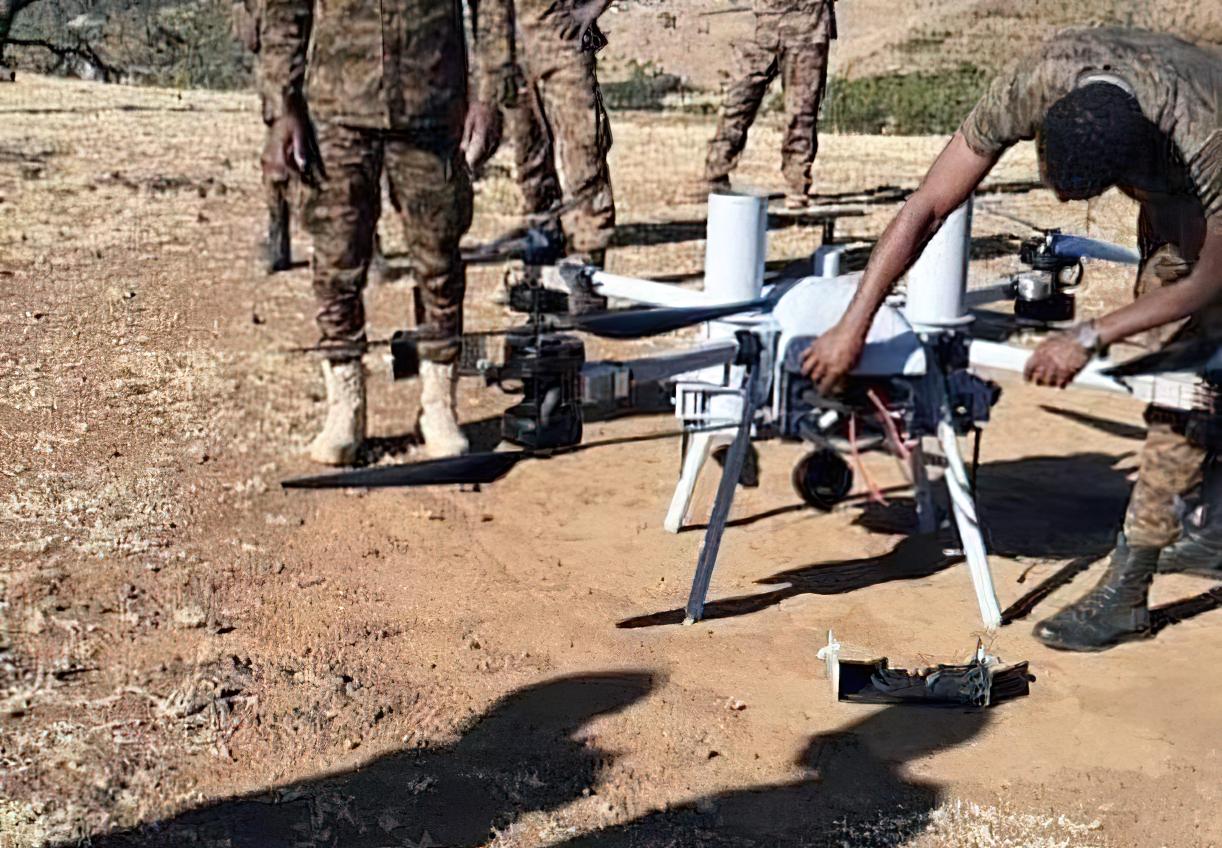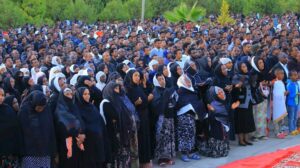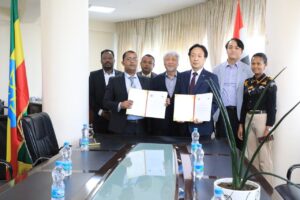Ethiopia › Forums › Food for thought › The war in Tigray is being complicated by ideological ambitions › Emirati unmanned combat aerial vehicles (UCAVs)
Emirati unmanned combat aerial vehicles (UCAVs)
The deployment of Emirati unmanned combat aerial vehicles (UCAVs) on behalf of the Ethiopian government has been speculated on ever since the beginning of hostilities with the rebellious Tigray Region in November 2020.  The oft-repeated claims that several Chinese-made Wing Loong UCAVs operate out of Assab air base in Eritrea to undertake combat missions over Tigray have never been supported by evidence that points towards such a deployment either in 2020 or now. However, almost one year into the conflict evidence that shows UAE-combat drones have indeed been delivered to Ethiopia to help it in its fight against the Tigray Defence Forces (TDF) has now finally emerged. [1]
The oft-repeated claims that several Chinese-made Wing Loong UCAVs operate out of Assab air base in Eritrea to undertake combat missions over Tigray have never been supported by evidence that points towards such a deployment either in 2020 or now. However, almost one year into the conflict evidence that shows UAE-combat drones have indeed been delivered to Ethiopia to help it in its fight against the Tigray Defence Forces (TDF) has now finally emerged. [1]
By Stijn Mitzer and Joost Oliemans
But rather than being the Wing Loongs that were previously claimed to have been active in the skies over Tigray, the delivered UCAVs instead consist of a large VTOL type that can be armed with two 120mm mortar rounds. These unguided mortar rounds offer significantly less accuracy than the guided weaponry deployed by the Wing Loongs or other Chinese UCAVs however, and are of limited use against an enemy that relies on mobility and surprise attacks rather than static defence lines. Their effectiveness decreases even further in urban areas, and it would necessitate great restraint on behalf of their operators not to deploy them in areas that still have civilians in them to avoid collateral damage.
The United Arab Emirates (UAE) has proven a staunch supporter of the Ethiopian government of Prime Minister Abiy Ahmed. What exactly this support has so far entailed is still the subject of debate. What is known is that large Il-76 transport aircraft frequently fly between the UAE and Harar Meda, Ethiopia’s largest air base. [1] Although the contents of their cargo can currently only be guessed at, they are almost certain to contain military-grade items specifically meant for use in the Tigray Region.
Previous UAE arms shipments to Ethiopia are known to have included large volumes of firearms produced by the Caracal company, which produces a number of modern small arms designs. [2] Much like the Israeli TAR-21 assault rifle also in service with Ethiopia, the weaponry supplied by the UAE was solely distributed to the Republican Guard. In recent times Ethiopia’s Republican Guard saw its tasks expanding to the point where they now actively participate in the Tigray War as one the country’s better-trained forces.
 Images of the UAE-delivered combat drones were reportedly taken some four months ago in the Maychew area of Ethiopia’s Tigray Region. [3] After a number of offensives by Tigray forces (which have meanwhile morphed into the Tigray Defence Forces) that sought to dislodge all remaining Ethiopian government forces from the region, Maychew is now firmly under Tigray control. The drone systems themselves likely retreated along with their Ethiopian operators, their range currently insufficient to harass Tigray forces around Maychew yet again.
Images of the UAE-delivered combat drones were reportedly taken some four months ago in the Maychew area of Ethiopia’s Tigray Region. [3] After a number of offensives by Tigray forces (which have meanwhile morphed into the Tigray Defence Forces) that sought to dislodge all remaining Ethiopian government forces from the region, Maychew is now firmly under Tigray control. The drone systems themselves likely retreated along with their Ethiopian operators, their range currently insufficient to harass Tigray forces around Maychew yet again.
Although the exact drone type that forms the basis for the UCAV design is as of yet unknown, they are identical in design to two UCAVs that were shot down by Houthi forces in Yemen. Perhaps unsurprisingly, these UCAVs were operated by UAE-backed forces at the time of their downing. Images taken of the drones after their descent to earth reveal a large commercial off-the-shelf VTOL design (presumably of Chinese origin) that has been modified to carry two mortar rounds.
To enable the carriage of the heavy 120mm ordnance, two large tubes were fitted to either side of the drone in which the mortar rounds are contained during flight. After finding a suitable target, the mortar rounds are released by remote control and plummet to their target essentially like dumb bombs. This is a highly inaccurate means of targeting even when dropped from low altitude, and limits the drones’ effectiveness to attacking stationary targets or large groups of infantry. In order to achieve the accuracy needed to strike even such simple targets, the rounds would have to be dropped from low altitude. This in turn makes the UCAV vulnerable to ground fire, although no system is reported to have been downed in Ethiopia yet.
From the regular flights of cargo aircraft that repeatedly enter Ethiopian airspace it is clear that its allies are not abandoning it in the face of mounting U.S. pressure to solve the conflict through political means (which, as an aside, is an option both fighting parties so far appear to be willing to consider). Interestingly, this even includes nations that are at odds with each other, with both the UAE and Iran delivering UCAVs and other armament to the Ethiopian regime. There is no doubt this won’t be the last delivery of arms, with the deployment of Chinese and Turkish drones also having been reported about, though never conclusively, on a number of occasions.
Ethiopia Autonomous Media










